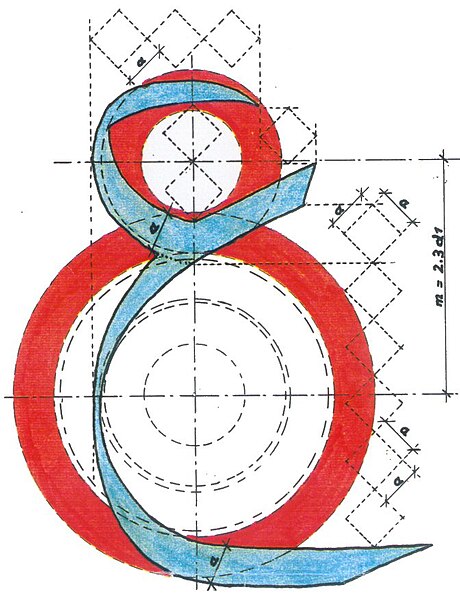Galatasaray Lycee
Galatasaray Lycee was opened in 1868 under the name of Mekteb-i Sultânî (Galata Palace Imperial School) however the history of school dates back to an even earlier period. As the story goes, on a cold winter day Sultan Bayezid is caught by a storm while he was out hunting on one of the hills in Constantinople. He takes shelter in a small neglected cottage located in a big garden filled with red and yellow roses. Gül Baba (Father Rose), the owner of the cottage, shows great hospitality to Sultan Bayezid. They have a great talk but Sultan Bayezid does not tell who he really is. After the storm ends and the sultan prepares to leave, he asks Gül Baba to tell him his greatest wish. The wise man replies that he has no such wish for himself. Then Sultan Bayezid confesses his true identity and again asks Gül Baba to tell him his wish. Then Gül Baba replies that he would be happy if the sultan builds a school that educates students from different backgrounds for positions in state administration in his beautiful garden. Sultan Bayezid fulfills the wish of this holy man who happens to be the leader of the Bektashi dervish lodge. He builds a school and hospital in the garden which makes Gül Baba happy. This is the story behind the foundation of Lycee de Galatasaray. The school was established in 1481 as the second Ottoman educational institution. At the time the school was called Galata Sarayı Enderûn-u Hümayûnu (Galata Palace Imperial School) and it’s said that Father Rose was the first headmaster.

Galata Palace Imperial School continued as an educational institution with a few alterations. The first significant change dates to the period of Sultan Mahmud II who is best known for his westernization reforms that completely changed the empire. During his reign Galata Palace Imperial School was transformed into Ottoman Medical School with a staff of French professors. However the tradition of French being the main language of instruction started almost 30 years later when Sultan Abdülaziz established Mekteb-i Sultânî (Galatasaray School of the Sultans) in 1868.
During the 18th and 19th century French was the official language of the diplomacy. In Ottoman Empire the majority of French speakers were non-Muslims especially Armenians, Greeks and Jews. They were the main supporting pillars of Ottoman foreign affairs. For a long time this structure worked without a problem but things changed due to the influence of the French Revolution. Ideas of revolution inspired citizens of the Ottoman Empire and drove the idea of nationalism into their hearts. Serbians, and then Greeks revolted. As these regions fought for their independence, Ottomans found that information was sometimes being leaked or falsified. Thus ended the era of non-Muslim civil servants in Ottoman foreign affairs and Turks entered the field in greater numbers. The Ottoman Empire had also previously preferred to send Turkish students to Europe for their education, but began to favor the idea of students completing their education in national institutions. To supply the need for civil servants of the state, Sultan Abdülaziz established the Mekteb-i Sultânî. He had been greatly impressed by the French educational system during his travels to Europe, and attempted to emulate the French Lycee model. The new school operated with French as its main language of instruction and its students were from all religious and ethnic communities of the Ottoman Empire.

With the establishment of the Republic of Turkey the name of the school changed to Galatasaray Lycee however the education continued to consist of a blend of Turkish and French. Galatasaray Lycee became co-educational in 1965. Today, Lycee de Galatasaray continues to produce graduates who go on to fill high-ranking positions in Turkey and abroad, causing many to still consider the school as a window to the west.
During the Republican period, Turkey had two prime ministers (Suat Hayri Ürgüplü, Nihat Erim), eight foreign ministers and several academicians, judges, doctors, writers, journalists, artists, poets, painters etc. who were alumni of this institution. In addition to this, King Zog the leader of Albania from 1925 to 1939 and Yitzhak Ben-Zui the second president of Israel both graduated from Lycee de Galatasaray.
Another unique contribution of the Lycee de Galatasaray is the Galatasaray Soccer Club, formed by students of the school in the fall of 1905. The first president of the club was Ali Sami Yen. The name Galatasaray itself comes from the school. Galatasaray Soccer Club has won a record 19 Super League titles, 15 Turkish Cups, and 13 Turkish Super Cups. Internationally Galatasaray won the UEFA Cup and UEFA Super Cup in 2000, becoming the only Turkish team to win a European trophy. The team is known by its fans widely by its nickname “Cimbom” as well as “Aslan” (The lion) and “Sarı Kırmızılar” (The Yellow-Reds).
